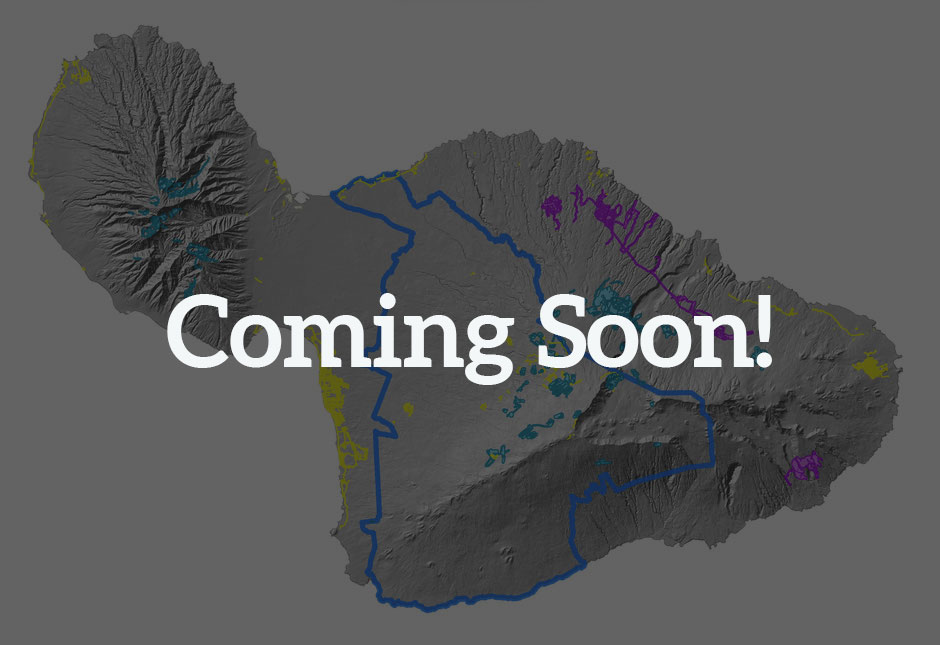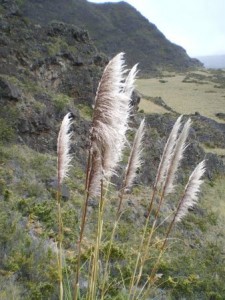
Pampas Grass
Cortaderia jubata, Cortaderia selloana
Report if seen anywhere on Maui

Known from and potential habitat
Species Info General
Family: Poaceae
It is prohibited to propagate; transport to new areas islands or locations within the state where they are not already established; or export outside the state. for more information, see the Hawaii State Noxious Weed List. The Division of Forestry and Wildlife of the Hawaii Department of Land and Natural Resources has designated this species as one of Hawaii’s Most Invasive Horticultural Plants.



Identification/Description
- Large clumping grass that may reach 2 meters (6 ft) or taller
- Leaves are narrow and have sharp, serrated edges
- Showy white to purple flower plumes are sometimes used in floral arrangements
- Native to South America, introduced to Hawaii as ornamentals
Impacts
- Seeds are spread long distances by wind. In native forests they outcompete native plants and create a fire hazard.
- Cortaderia jubata plants are able to produce viable seeds without cross-pollination
- C. selloana, requires cross-pollination between male and female plants to produce viable seeds, spread primarily by wind. The invasive nature of C. selloana was not recognized in Hawaii in past years because only female plants were cultivated and sold. Male plants are now available.
- Serious pests in California and New Zealand
On Maui
Both species of pampas grass were planted as ornamentals in upcountry Maui, and Cortaderia jubata has spread to other yards, pastures, native forests and Haleakalā National Park. MISC is working to control both species before they become widespread. Property owners can help by contacting MISC for free help in removing these plants.
Control info/Info on what MISC does about it
- Coming Soon!
Resources/References
- Pampas grass information from HISC
- Cortaderia jubata information from Plant Pono
- Cortaderia selloana information from Plant Pono
